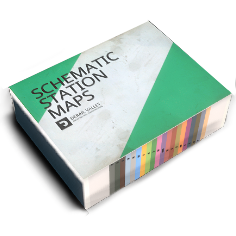Rheostatic & Regenerative Brake: Difference between revisions
importing old manual |
No edit summary |
||
| Line 2: | Line 2: | ||
<translate> | <translate> | ||
<!--T:1--> | <!--T:1--> | ||
Rheostatic braking is an alternative way of slowing down a motorized rail vehicle, without wearing and overheating the brake shoes. It is a dynamic braking feature of electric vehicles, including diesel-electric. | Rheostatic braking is an alternative way of {{pll|Braking Overview|slowing down}} a motorized {{pll|Rail Vehicle Types|rail vehicle}}, without {{pll|Wheels & Brakes Damage|wearing and overheating}} the {{pll|Brake Shoes|brake shoes}}. It is a {{pll|Dynamic Brake|dynamic braking}} feature of electric vehicles, including {{pll|Powertrains Overview|diesel-electric}}. | ||
<!--T:2--> | <!--T:2--> | ||
To make the rheostatic brake operational, the driver needs to disengage the throttle and have the reverser set to the direction the vehicle is moving. The brake is usually operated by a lever that turns TMs into generators, when applied. The electrical circuits in the vehicle get reconfigured, so that the current generated by the TMs is passed through resistors. This slows down the vehicle at the cost of creating heat, dissipated into the atmosphere by powerful fans. | To make the rheostatic brake operational, the driver needs to disengage the {{pll|Throttle|throttle}} and have the {{pll|Reverser|reverser}} set to the direction the vehicle is moving. The brake is usually operated by a lever that turns {{pll|Traction Motors|TMs}} into generators, when applied. The electrical circuits in the vehicle get reconfigured, so that the current generated by the TMs is passed through resistors. This slows down the vehicle at the cost of creating heat, dissipated into the atmosphere by powerful fans. | ||
<!--T:3--> | <!--T:3--> | ||
On electric vehicles, instead of being turned into heat, the generated current may be recouped to the grid or the onboard batteries. This is called regenerative braking. Nevertheless, the working principles of the two braking systems are quite similar. | On electric vehicles, instead of being turned into heat, the generated current may be recouped to the {{pll|Electricity|grid or the onboard batteries}}. This is called regenerative braking. Nevertheless, the working principles of the two braking systems are quite similar. | ||
<!--T:4--> | <!--T:4--> | ||
Rheostatic and regenerative braking, both featured only on some motorized vehicles, do not provide a very powerful braking force for large trains, but can slow them down over time if used tactfully. The effect of this braking type peaks at modest speeds, around 35 km/h. The further the speed from the peak, the weaker the braking force. To bring a vehicle to a complete stop, the driver must use braking methods that rely on brake shoes. | Rheostatic and regenerative braking, both featured only on some motorized vehicles, do not provide a very powerful braking force for large trains, but can slow them down over time if {{pll|Driving Efficiency|used tactfully}}. The effect of this braking type peaks at modest speeds, around 35 km/h. The further the speed from the peak, the weaker the braking force. To bring a vehicle to a complete stop, the driver must use braking methods that rely on brake shoes. | ||
<!--T:5--> | <!--T:5--> | ||
Revision as of 17:46, 10 March 2025
Rheostatic braking is an alternative way of slowing down a motorized rail vehicle, without wearing and overheating the brake shoes. It is a dynamic braking feature of electric vehicles, including diesel-electric.
To make the rheostatic brake operational, the driver needs to disengage the throttle and have the reverser set to the direction the vehicle is moving. The brake is usually operated by a lever that turns TMs into generators, when applied. The electrical circuits in the vehicle get reconfigured, so that the current generated by the TMs is passed through resistors. This slows down the vehicle at the cost of creating heat, dissipated into the atmosphere by powerful fans.
On electric vehicles, instead of being turned into heat, the generated current may be recouped to the grid or the onboard batteries. This is called regenerative braking. Nevertheless, the working principles of the two braking systems are quite similar.
Rheostatic and regenerative braking, both featured only on some motorized vehicles, do not provide a very powerful braking force for large trains, but can slow them down over time if used tactfully. The effect of this braking type peaks at modest speeds, around 35 km/h. The further the speed from the peak, the weaker the braking force. To bring a vehicle to a complete stop, the driver must use braking methods that rely on brake shoes.
The driver needs to disengage the rheostatic or regenerative brake before being able to operate the throttle and reverser again.
See also: Hydrodynamic Brake, Engine & Compression Brake, Train Brake, Electric & Diesel-Electric, Throttle, Reverser, Powertrain Overheating, Brake Shoes, Weather
